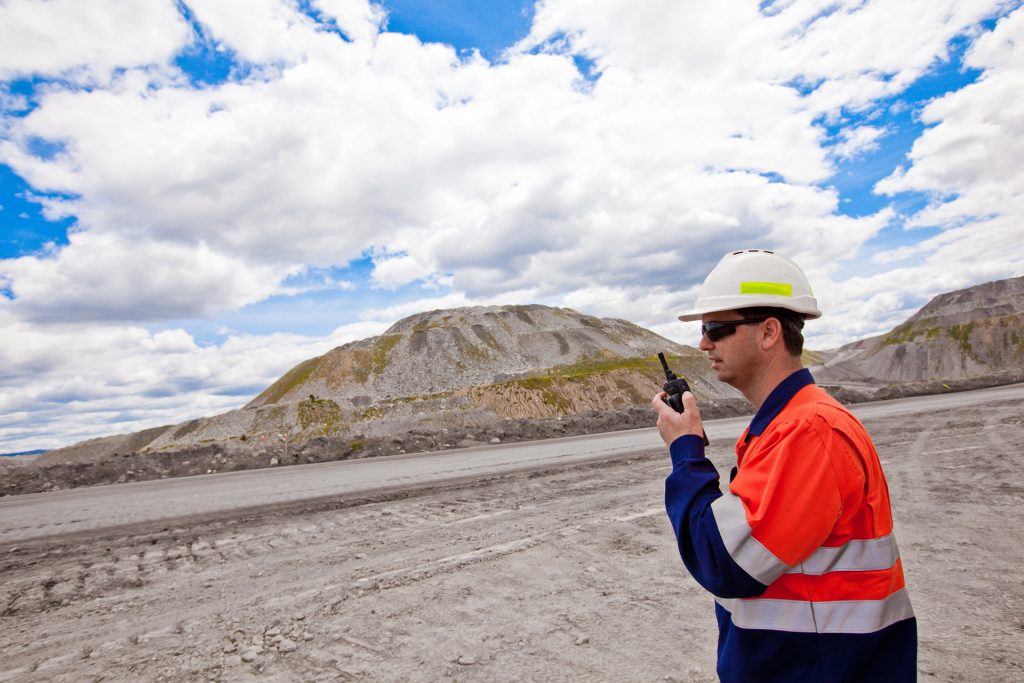
In the depths of a mine, suddenly, a rumble shakes the ground. Within moments, a section of the tunnel collapses. Workers are trapped inside. Without two-way radios, panic sets in as miners shout for help, their voices swallowed by the thick walls of rock. Above ground, supervisors have no way of knowing what’s happened or where their team is.
Precious minutes tick by as rescuers scramble to find the trapped workers, unaware of the danger they’re facing or how many need help. In a situation like this, the lack of immediate communication can make the difference between a successful rescue and a tragic loss.
Without the advantages of two-way mine radio systems, managing a mining operation would be much more complex and dangerous. This story is just one example of how two-way radios have become the backbone of communication in mining for natural resources across the world. In the article that follows, we’ll give an overview of the numerous advantages and applications that these radios bring to the mining industry.
Reliable Communications in Mining
Challenging the Environment
Instant Communication
Improved Safety with Mine Radio Systems
Emergency Communication
Improved Coordination During Evacuations
Monitoring Hazardous Areas
Increased Productivity with Two-Way Radio Systems
Streamlined Operations
Coordination Between Surface and Underground Teams
Reducing Equipment Downtime
Cost-Effective Communication Solution
No Monthly Service Fees
Durable and Long-Lasting
Long Battery Life
In mining, workers often spend long hours underground, and communication devices need to last throughout the entire shift. Two-way radios are equipped with long-lasting batteries, ensuring that workers remain connected for extended periods. This is essential in remote areas where charging stations might not be easily accessible, and reliable communication is a must.
Customizable Features for Mining Radios
Hands-Free Communication
GPS Tracking
Noise-Canceling Technology
Compliance with Safety Regulations
Intrinsically Safe Radios
In some mines, particularly those that deal with flammable gases or materials, the risk of explosions is a serious concern. Intrinsically safe radios are designed to operate in these environments without causing sparks or overheating, making them essential for ensuring worker safety in hazardous conditions. These handheld portables and mobile radios meet the strict safety standards required for underground operations, giving mining companies peace of mind that their communication tools won’t create additional risks.
Meeting MSHA Standards
The Vital Role of Two-Way Radios in Mining
Two-way radios are an indispensable tool in the mining industry. They provide reliable communication in areas where other devices fail, enhance safety through rapid emergency communication, and increase productivity by streamlining operations. Additionally, they are a cost-effective and durable solution designed to withstand the harsh conditions of a mining environment. With customizable applications like hands-free communication, GPS tracking, and noise-canceling technology, mine communication systems can be tailored to meet the specific needs of any mining operation.
In a field where safety and efficiency are paramount, investing in the right communication tools is essential. Underground radio communication systems play a crucial role in ensuring that miners can perform their jobs safely and effectively, making two-way radios an integral part of modern mining operations.
Whether you are coordinating tasks, responding to emergencies, or simply staying in touch with your team, mining radios are the key to keeping operations running smoothly and protecting workers in one of the world’s most demanding industries.
Tridon Understands Your Mining Communication Concerns
Mining often takes place in some of the most remote and isolated areas, where conditions can change rapidly. The challenge for every mining company is to meet stringent production goals while, at the same time, ensuring the safety of every worker on-site – both above and below the ground. Reliable communication systems are key to making sure operations run smoothly and safely.
At Tridon Communications, we understand that your workers need a rugged, dependable communication solution that won’t fail them. Our mining communications equipment is built to handle the harshest of conditions. Tridon’s Motorola Solutions and Kenwood two-way radios are resistant to water, dust, and grime. They also have an intrinsically safe option to use in hazardous environments. Don’t let an outdated or unreliable communication system put your business or your employees at risk.



